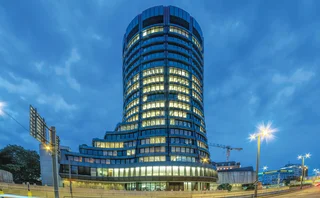
FX options business booming
Banks are expanding FX options teams in London and Asia in response to increased interest in derivatives from clients, officials told RiskNews’ sister publication FX Week .
John Meyer, global head of FX options at UBS Warburg in Stamford, Connecticut, said the general trend for a weakening dollar this year has boosted demand for options as European investors and clients seek to protect their exposures. "A big part of corporate demand has come from the dollar’s turnaround. That has helped us since - as a European bank - our clients usually have a lot of dollars to sell."
Scott Wacker, global head of corporate distribution at ABN Amro in Amsterdam added: "Low volatility kept activity low until the euro took off and left a lot of people unhedged. As a result, we saw a lot of clients looking to hedge with exotic option structures to compensate for the currency moves."
Increased business is coming both from banks’ existing clients doing more options trading and from clients new to options, said officials. In the UK, for example, banks have reported increased interest in options from smaller mid-tier corporates.
"[New business] is due in part to technology which gives a wider set of end-users access to banks’ guidance and services which they may not have previously had," said UBS's Meyer. "We have also seen a pickup in business from client banks, who service smaller corporates, especially as they are keen users of our electronic tools."
In the US, although some banks have reported that corporates have reduced the amount of hedging they do, other anticipated drains on options business have not materialised. "We were a little nervous earlier this year that the new accounting rules [FAS 133 and IAS 39] would diminish options trading in the US," said Meyer. "But this hasn’t had a big effect. Overall business is very good."
Some banks, such as ABN Amro, even reported an uptick in options trading on the back of "clarification" of the US accounting rules. "A lot of the problems this market faced in the past are now behind us," said Wacker. "We see this growth continuing, and are planning a pretty aggressive expansion going into next year."
Lars Thuesen, head of options at broker Saxo Bank in Copenhagen, confirmed his firm is seeing more demand for FX options this year. "It is partly due to higher yields and that people are becoming more sophisticated in their trading," he said.For Saxo, demand is particularly high in Asia, where low interest rates mean investors are happier to take on risk, while spot volatility raises yields, said Thuesen.
Upbeat prospects for banks’ forex options teams comes on the back of a difficult year in 2001. Risk magazine’s annual FX options survey found that options volumes in 12 currency pairs declined by $1.1 trillion among the 13 participating dealers in 2001. That data added to Bank for International Settlements’ triennial survey of the FX markets, published in October 2001, that found options turnover had slipped from $18.5 trillion in 1998 to $15 trillion in 2001.
Only users who have a paid subscription or are part of a corporate subscription are able to print or copy content.
To access these options, along with all other subscription benefits, please contact info@risk.net or view our subscription options here: http://subscriptions.risk.net/subscribe
You are currently unable to print this content. Please contact info@risk.net to find out more.
You are currently unable to copy this content. Please contact info@risk.net to find out more.
Copyright Infopro Digital Limited. All rights reserved.
You may share this content using our article tools. Printing this content is for the sole use of the Authorised User (named subscriber), as outlined in our terms and conditions - https://www.infopro-insight.com/terms-conditions/insight-subscriptions/
If you would like to purchase additional rights please email info@risk.net
Copyright Infopro Digital Limited. All rights reserved.
You may share this content using our article tools. Copying this content is for the sole use of the Authorised User (named subscriber), as outlined in our terms and conditions - https://www.infopro-insight.com/terms-conditions/insight-subscriptions/
If you would like to purchase additional rights please email info@risk.net
More on Regulation
Industry calls for major rethink of Basel III rules
Isda AGM: Divergence on implementation suggests rules could be flawed, bankers say
Saudi Arabia poised to become clean netting jurisdiction
Isda AGM: Netting regulation awaiting final approvals from regulators
Japanese megabanks shun internal models as FRTB bites
Isda AGM: All in-scope banks opt for standardised approach to market risk; Nomura eyes IMA in 2025
CFTC chair backs easing of G-Sib surcharge in Basel endgame
Isda AGM: Fed’s proposed surcharge changes could hike client clearing cost by 80%
UK investment firms feeling the heat on prudential rules
Signs firms are falling behind FCA’s expectations on wind-down and liquidity risk management
The American way: a stress-test substitute for Basel’s IRRBB?
Bankers divided over new CCAR scenario designed to bridge supervisory gap exposed by SVB failure
Industry warns CFTC against rushing to regulate AI for trading
Vote on workplan pulled amid calls to avoid duplicating rules from other regulatory agencies
Bank of Communications moves early to meet TLAC requirements
China Construction Bank becomes last China G-Sib to release TLAC plans
Most read
- Top 10 operational risks for 2024
- Japanese megabanks shun internal models as FRTB bites
- Top 10 op risks: third parties stoke cyber risk







